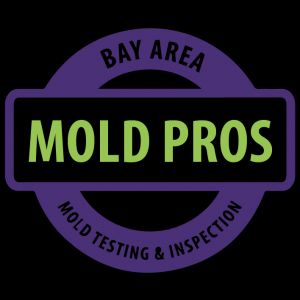Mold Inspection and Testing: What's the Difference?Posted by Bayareamoldpros on August 4th, 2023
When dealing with mold issues in indoor environments, it's essential to understand the difference between mold inspection and mold testing. Both are crucial steps in identifying and addressing mold problems, but they serve distinct purposes. Mold inspection involves a comprehensive visual assessment to identify mold growth and potential moisture sources, while mold testing involves collecting samples to determine the types and concentrations of mold spores present. In this article, we will explore the difference between mold inspection and mold testing and their importance in the mold remediation process. Mold inspection is the initial step in assessing a property for mold growth and moisture-related issues. During a mold inspection, a certified mold inspector conducts a thorough visual assessment of the property, including both the interior and exterior. The primary objectives of a mold inspection are as follows: Identifying Mold Growth: The inspector looks for visible signs of mold growth, such as discoloration, moldy odors, or mold colonies on surfaces. They search for mold in common areas where it is likely to thrive, such as basements, bathrooms, kitchens, and attics. Moisture Assessment: Since mold requires moisture to grow, the inspector checks for any signs of water leaks, condensation, or areas with high humidity levels. Identifying and addressing moisture sources is essential to prevent further mold growth. Mold Sources: The inspector tries to determine the potential sources of mold, such as water leaks, flooding, or poor ventilation. Addressing these sources is crucial to prevent mold recurrence. Building Envelope: A mold inspector may also assess the building envelope, including the roof, walls, and foundation, to check for any signs of water intrusion or structural issues that may contribute to mold growth. HVAC Systems: The inspection may include an assessment of the heating, ventilation, and air conditioning (HVAC) systems to ensure they are clean and not contributing to mold contamination. Mold testing involves collecting air or surface samples to determine the presence and concentration of mold spores in the environment. The primary objectives of mold testing are as follows: Mold Species Identification: Mold testing helps identify the types of mold present in the indoor environment. This information is useful for understanding the potential health risks associated with specific mold species. Mold Spore Concentration: Testing provides information about the concentration of mold spores in the air or on surfaces. Elevated mold spore levels indicate a potential mold problem that requires remediation. Hidden Mold Detection: Mold testing can detect hidden mold growth that may not be visible during a visual inspection. Mold spores can be present in the air even when mold is not easily observable. Post-Remediation Verification: After mold remediation, testing is conducted to verify that the mold issue has been effectively addressed, and the indoor environment is safe and mold-free. Types of Mold Testing: There are different types of mold testing methods, including: Air Sampling: Air sampling involves collecting air samples to analyze the concentration and types of mold spores present in the indoor air. Surface Sampling: Surface sampling involves collecting samples from visible mold growth or suspected areas of mold contamination to identify the mold species. Swab Sampling: Swab sampling involves using a sterile swab to collect mold samples from surfaces. It is commonly used for testing small areas or specific materials. Tape Lift Sampling: Tape lift sampling involves using clear tape to collect mold spores from surfaces. The tape is then analyzed under a microscope to identify the mold species. Conclusion: In summary, mold inspection and mold testing are both essential steps in the mold remediation process. Mold inspection involves a visual assessment to identify mold growth and moisture sources, while mold testing involves collecting samples to determine the presence and concentration of mold spores. Both processes provide valuable information to understand the extent of mold issues and to develop an effective mold remediation plan. If you suspect mold growth in your property or require mold testing for post-remediation verification, it is essential to engage certified mold professionals like Bay Area Mold Pros. Their expertise in mold inspection and testing can help ensure a safe and healthy indoor environment for occupants. Bayareamoldpros is a leading mold inspection and mold testing company providing quality mold analysis services and helping families & businesses overcome the devastating setbacks caused by mold. Bay Area Mold Pros suggests every homeowner in the San Francisco area should get periodic mold inspections. Bay Area Mold Pros is available from 7am to 7pm to speak with those who want to request an inspection on their property.To schedule our mold inspection & mold testing services visit our website bayareamoldpros.com either email us or fill in the contact form on our website. We can be reached 24/7 at (650)762-6228. Like it? Share it!More by this author |



